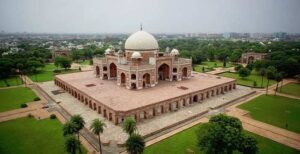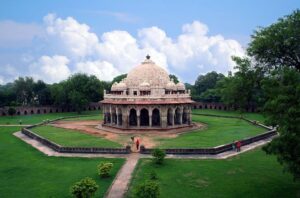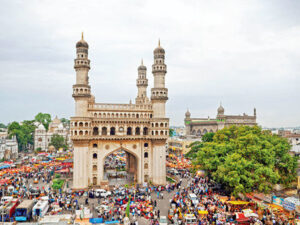A marvel in Indo-Islamic architecture, Humayun’s tomb is a Persian-Indian art collaboration, surpassing all prior Islamic structures in grandeur and scale.
In the 16th century, the Tomb of Mughal Emperor Humayun, a marvel in Indo-Islamic Architecture, epitomizes enduring love. Commissioned by Empress Bega Begum, wife of Emperor Humayun, it reflects her deep affection for him.
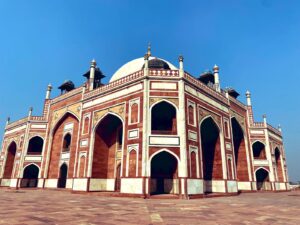
Bega Begum, also called Haji Begum, engaged Persian architects to craft an enduring masterpiece. Emperor Akbar, Humayun’s son, spearheaded the project, ensuring an everlasting tribute to his father.
This remarkable structure, Humayun’s Tomb, earned UNESCO World Heritage status in 1993, a global recognition of its historical significance.

Some interesting historical facts about the Mughal Emperor Humayun’s Tomb.
After Mughal Emperor Humayun’s demise in 1556, his body initially rested at Delhi’s Purana Quila. Later, it traveled to Sirhind, Punjab, witnessed by Khanjar Beg. Emperor Akbar, Humayun’s son, inspected the tomb in 1571 during its completion.
The tomb’s construction spanned 1565 to 1572, costing 1.5 million rupees, funded entirely by grieving Mughal Empress Bega Begum. Devoted to her husband, she dedicated her life to creating a magnificent memorial near the Yamuna River in Delhi.
Ain-i-Akbari, a 16th-century document, notes that Empress Bega Begum oversaw the tomb’s construction after returning from Mecca and completing the Hajj pilgrimage.
According to historian Abd al-Qadir Bada’uni, Persian architect Mirak Mirza Ghiyas designed the tomb but passed away before completion. His son, Sayyed Muhammad ibn Mirak Ghiyathuddin, finished the structure.
In 1611, English merchant William Finch marveled at the rich interior of the tomb, describing luxurious furnishings, carpets, and a shamiana above the cenotaph. It housed Humayun’s sword, turban, and shoes, surrounded by copies of the Quran.

In the realm of Indo-Islamic architecture, Humayun’s tomb is a masterpiece where Persian and Indian craftsmen collaborated. This garden tomb surpasses any built before in the Islamic world, boasting grandeur and scale.
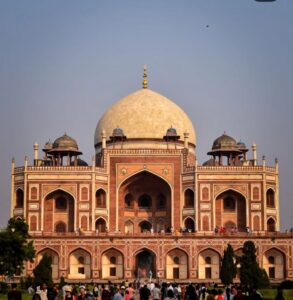
Noteworthy innovations include a char-bagh, inspired by the Quran’s paradise description. The exterior’s breathtaking view showcases the first garden-tomb in the Indian subcontinent, employing a Persian double tomb.
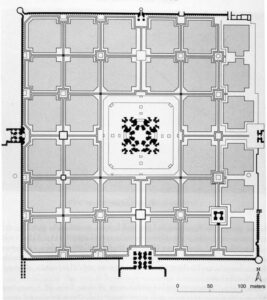

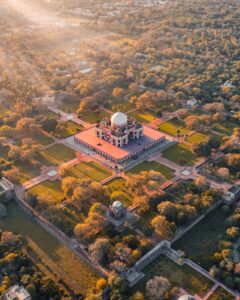
The exterior view of the Humayun’s Tomb is breathtaking as was the first garden tomb built in the Indian subcontinent and the first ever tomb to deploy a Persian double tomb in its construction. The scenic beauty of this historical and architectural marvelous leave people mesmerized
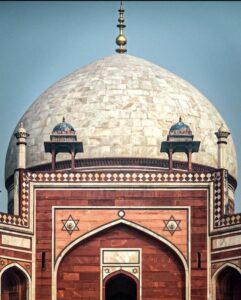
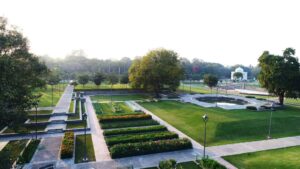
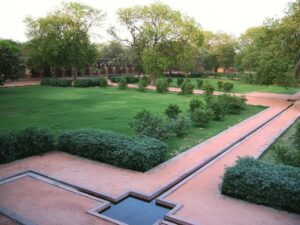
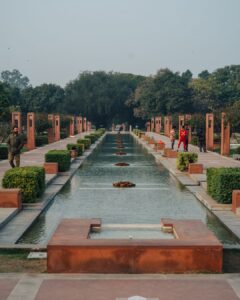
Amidst the historical and architectural marvel, the tomb stands near Hazrat Nizamuddin Auliya’s Dargah Shrine. This location, densely packed with medieval Islamic heritage, reflects seven centuries of tomb building.
Dubbed the ‘dormitory of the Mughals,’ over 100 Mughal family members rest in the tomb’s cells. The interior, a vast octagonal chamber, houses Emperor Humayun’s grave, surrounded by rooms containing the tombs of his wives and later Mughals. Identification remains uncertain due to the lack of inscriptions.
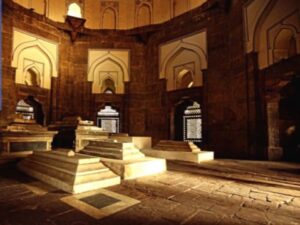
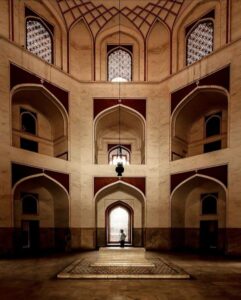
The dome lying on top of the Humayun’s Tomb stands tall at 42.5 m and can be accessed through stairs. The design and architecture of Humayun’s Tomb are something not to be missed for sure as its platforms are intertwined on top of each other which makes them delicate yet admirable.
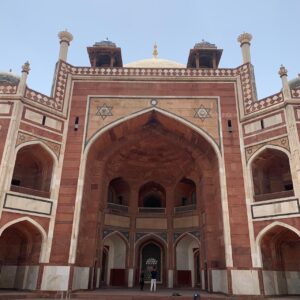
Exhibiting Mughal architectural brilliance, Humayun’s Tomb interiors feature rich carpets and shamiana, exuding grandeur.

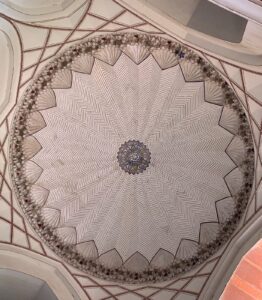
A pioneer in dynastic mausoleums, Humayun’s Tomb set the stage for Mughal architecture, peaking with the later Taj Mahal. Humayun’s Tomb was the first of the grand dynastic mausoleums that were to become synonyms of Mughal architecture with the architectural style reaching its zenith 80 years later at the later Taj Mahal
Within the complex lie contemporary 16th-century Mughal garden tombs, such as Nila Gumbad, Isa Khan’s Tomb, Bu Halima Garden, Afsarwala, Barber’s Tomb, and the Arab Serai where craftsmen stayed.
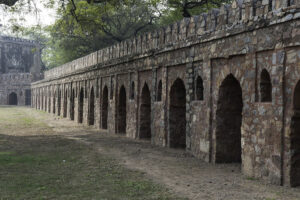
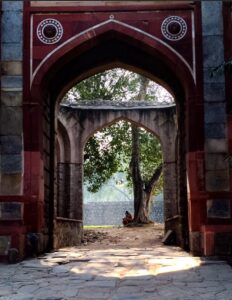
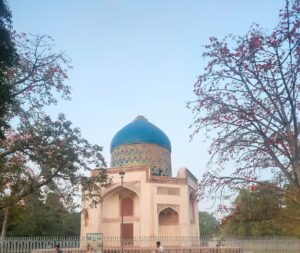
Besides the main tomb enclosure of Humayun, several smaller monuments dot the pathway leading up to it, from the main entrance of the monument.
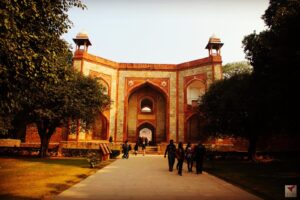
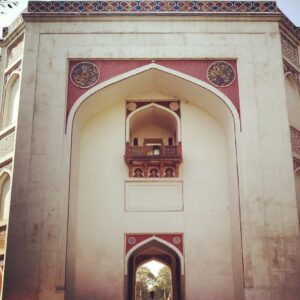
Leading to Humayun’s main tomb, smaller monuments, including Isa Khan Niyazi’s tomb, pre-date it by twenty years, constructed in 1547 CE.
The Isa Khan tomb complex is a walled area adjacent to Humayun’s Tomb and is the resting place of Isa Khan Niyazi, a noble of influence at the court of Emperor Sher Shan Suri. A Mosque and an octagonal tomb built in the Sur style are enclosed in Isa Khan’s walled complex. An inscription on a sandstone slab over the mihrab inside the tomb dates the construction to the Hijra year 954 (A.D. 1547-1548). The complex is the first historic structure encountered by visitors upon entering the World Heritage Site complex of Humayun’s Tomb.
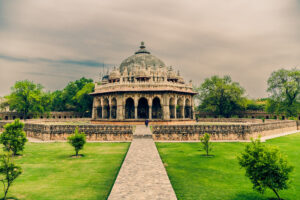
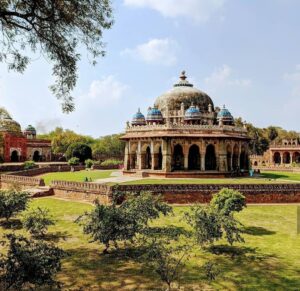
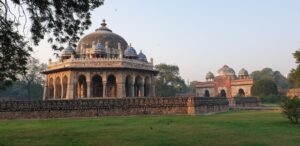
The Isa Khan tomb complex includes a beautiful historical Mosque built in the Sur style enclosed in Isa Khan’s walled complex adjacent to Humayun’s Tomb.



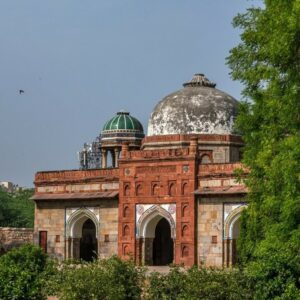
During the Mughal era (16th to 19th century), the practice of commissioning monuments gained momentum through the efforts of Mughal Empress Bega Begum in constructing Humayun’s Tomb. This eminent monumental mausoleum in India is an early masterpiece that decisively influenced the design of the later Taj Mahal, the pinnacle of Indo-Islamic architecture.
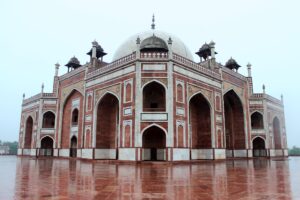
It is widely believed that Humayun’s Tomb served as the inspiration for the Taj Mahal. Since Bega Begum built Humayun’s Tomb in memory of her husband, Mughal Emperor Shah Jahan found inspiration to create a grand monument after the demise of his beloved wife, Mumtaz Mahal. The Taj Mahal, constructed almost a century later, draws significant inspiration in design and architecture from Humayun’s Tomb.
